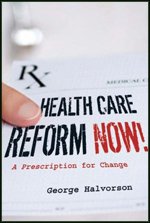
Insurance is a huge piece of the overall health care puzzle. Make no mistake about that. As with any puzzle, there are many many other pieces that need to be put in place in order to complete it. eMax Health went undercover in the land of red tape and now share what they have found:
When interviewers posing as Medicaid patients called doctors’ offices that participate in the Florida Medicaid program, they were met in some cases by disconnected numbers, phone trees and time on hold before they could find out about scheduling an appointment.How many of you, our readers, find that eerily familiar? With insurance (i.e. Medicaid) access to care is supposed to be assured. At least that is the common perception. Many low income families who rely on Medicaid would probably point out that it can often feel like access in name only.
Weekend and evening appointment times in some instances were scarce and some providers who said they were willing to take new patients proved to be less willing when they found out the new patient was part of the Medicaid program.Hardly a surprise is you do some digging and see how low the actual reimbursement from Medicare to providers is. Do a little Googling, the results will probably shock you.
The study, which occurred in 2004, found that nearly 87 percent of the doctors in Florida’s Medicaid primary care case management program (MediPass) program told the interviewers that they would accept new patients, but only 68 percent said they were accepting new Medicaid patients.The article goes on to examine aspects of the report in more depth, even bringing in some complementary data from a 2007 study done in Oregon. I predict that this is far from the last article we will see on this subject as election season progresses.
While each of these problems might seem relatively small compared to the lack of insurance that keeps some patients away from regular care, Allyson Hall, Ph.D., and colleagues at the University of Florida argue that they can affect access to health care in significant ways.
“If an individual has a particularly difficult time getting in to see the usual physician, we could reconsider whether that physician is actually acting as a regular source of care for that patient,” the researchers write in the May 2008 issue of the Journal of Health Care for the Poor and Underserved.
This issue is one that points out two major and related problems: the actuality of health care access and the reticence of providers who many times operate at a loss due to reimbursement rates from government plans. While profit may be vulgar to bring up, keeping a business (or medical practice) viable does require making more than you spend. For doctors this is a major sticking point. At the same time there is the plight of the low income American, lucky enough to have insurance but frequently stymied when attempting to use it.
Thank you for calling the United States. If you are experiencing a health care emergency please press "1"...
SOURCE: "Insured, Low-Income Patients Face Hurdles To Health Care Access" 05/08
photo courtesy of fuzzcaminski, used under its Creative Commons license


















